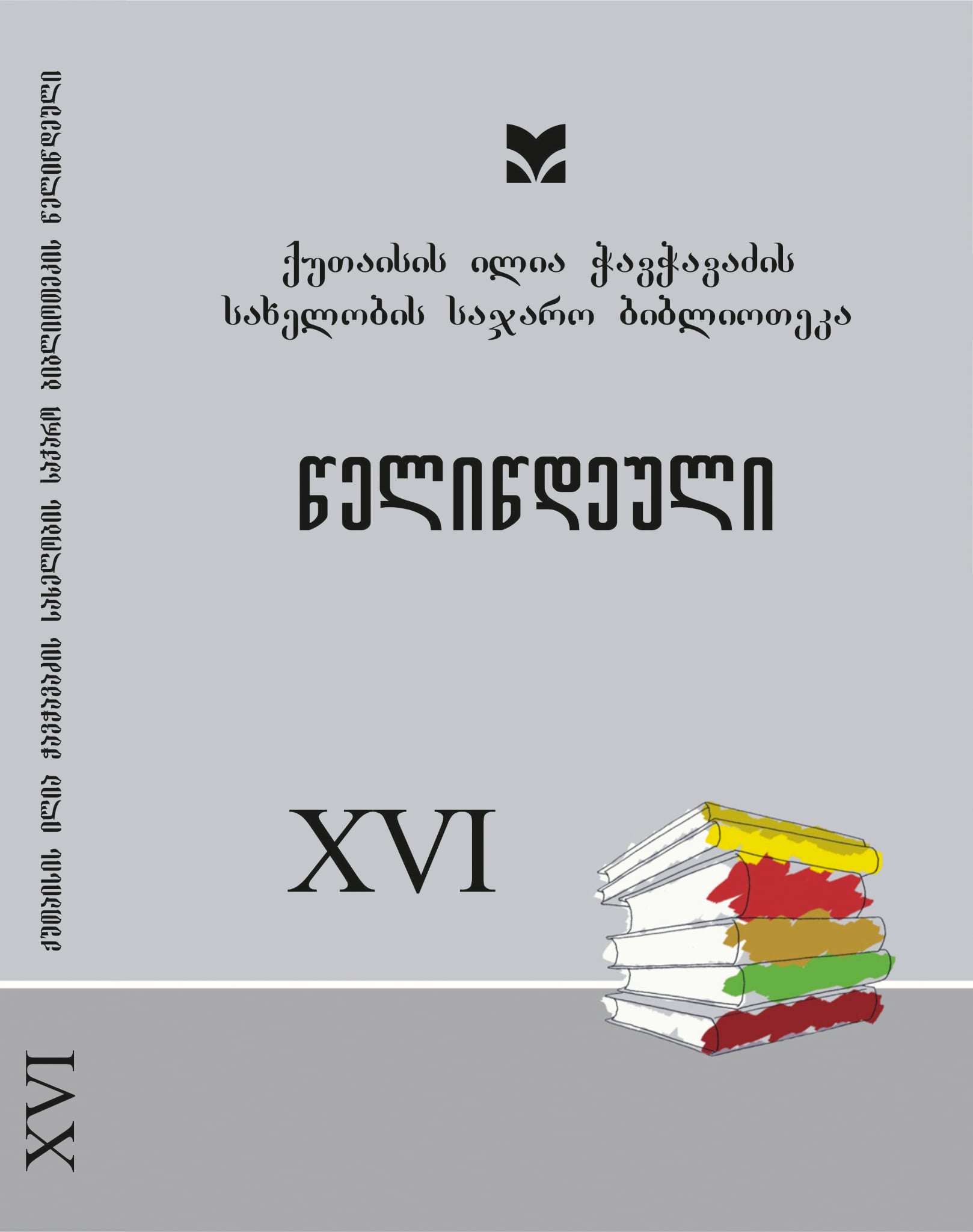A Micromodel of the Epoch in Otar Chkheidze’s „Boriaqi“
DOI:
https://doi.org/10.61491/yk.16.2024.9398Keywords:
20th century Georgian prose, Otar Chkheidze’s work „Boriaki“, criticism of the Soviet regimeAbstract
The study is based on Otar Chkheidze’s well-known work Boriaqi, which served as the basis for the film The Journey of a Young Composer (director: Giorgi Shengelaia). The writer created artistic-documentary works under the challenging conditions of the Soviet regime, which eventually coalesced into a 24-volume cycle of The Chronicle of Kartli. In Boriaqi, the artistic space of a specific epoch is reflected: „This is the placement of the work within its own context. A literary work embodies the spirit of the work itself and various forms of conflict“ (Gaga Lomidze).
For Otar Chkheidze, the theory of distance was unacceptable. His work, structured as a coherent cause-and-effect narrative, possesses a strong political context, recounting the events of the 1924 uprising under the leadership of Kakutsa Cholokashvili. It depicts the brutality of the Red regime and the repressions, showing how the army ravages villages and families: „As if the army were liberators, as if they were saviors, as if they were the steadfast guides to happiness“ (Otar Chkheidze). The prototypes of the characters in Boriaqi, the Itrielis, are the writer’s ancestors. Each phrase spoken by the Itrieli brothers and uncles conveys the character of the epoch, historical wisdom, strategy, hope, and despair.
In their deliberations, alongside the depiction of the international environment’s stance toward independent Georgia, the work emphasizes the emotional and political essence of the country’s lost independence: „the sweetness of lost independence and the bitterness of subjugation“, particularly when the government is led by those preaching unhealthy cosmopolitanism. The writer here is not an anonymous narrator; he reasons persuasively and convinces the reader: „Ilia was killed and everything was thrown into chaos, because he was killed, everything fell into disorder. Fate was against us, and we could not cope; it turned against us fatally“ (Otar Chkheidze).
Boriaqi serves as a micromodel of its epoch, capturing the transition from the joy of May 26, 1918, to the tragedy of February 25, 1921, when the Eleventh Red Army raised the red flag over Tbilisi. The 1924 uprising, aimed at restoring independence, also ended in ashes. What remained was hope and expectation-the anticipation of a call to save the nation. Each character embodies a significant symbolic role within a system of decoding, from Nikusha Chachanidze, accused of leading a nonexistent conspiracy, to the steward, who could not understand why he ended up among those condemned to death.
Within the narratological diversity of the work, the writer unifies the fabula and the plot, narration and history, through the culture of the heart, thus transforming documentary reality into artistic creation. The plot is dynamic: the young composer Nikusha Chachanidze stands as a symbol of hope throughout the story-the hope that, whether today or tomorrow, the struggle will resume and the country will be liberated from the force opposing God, tradition, and national identity.
In analyzing the text, we employed an interpretative method. This study is significant in considering the historical context of the literary work and emphasizing the writer’s mission: to depict the character of the epoch under the constraints of Soviet censorship.




